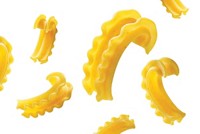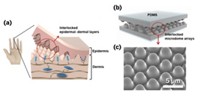Advertisement
Grab your lab coat. Let's get started
Welcome!
Welcome!
Create an account below to get 6 C&EN articles per month, receive newsletters and more - all free.
It seems this is your first time logging in online. Please enter the following information to continue.
As an ACS member you automatically get access to this site. All we need is few more details to create your reading experience.
Not you? Sign in with a different account.
Not you? Sign in with a different account.
ERROR 1
ERROR 1
ERROR 2
ERROR 2
ERROR 2
ERROR 2
ERROR 2
Password and Confirm password must match.
If you have an ACS member number, please enter it here so we can link this account to your membership. (optional)
ERROR 2
ACS values your privacy. By submitting your information, you are gaining access to C&EN and subscribing to our weekly newsletter. We use the information you provide to make your reading experience better, and we will never sell your data to third party members.
Education
Newscripts
Klingon Chemistry, Hairy Fish
by Lauren K. Wolf
April 20, 2009
| A version of this story appeared in
Volume 87, Issue 16

Just in time for the release of the long-awaited movie "Star Trek" in May, one of the American Chemical Society's journals has embraced sci-fi geekdom and gone Klingon. The Journal of Chemical Information & Modeling recently published an article about chemical translation displaying the KLINGON VERSION of chemical terms in its text (2009, 49, 519).
Well-known to "Star Trek" superfans everywhere (and, let's face it, most scientists), Klingon is the language and name of a fictional warrior race with dark skin and ridged foreheads. The language itself was created by Marc Okrand, a linguist hired by Paramount Pictures to come up with a believable alien vocabulary for the films.
An admitted "Star Trek" fan and the article's author, Roger Sayle of OpenEye Scientific Software in New Mexico, used the Klingon characters to illustrate a point about foreign translations of chemical nomenclature. "Klingon follows some of the rules seen here on Earth," Sayle tells C&EN. Much like German and Japanese, it names some compounds and elements by their properties. For instance, in German, hydrogen is "wasserstoff" and, as such, is a component of water, or "wasser." Similarly, in Klingon, water is "bIQ" (pronounced bik), and hydrogen is "bIQ-SIp" (pronounced something like bik-ship).
But the discussion of language connectivity is just a small part of Sayle's article, which focuses on OpenEye's new Lexichem chemical translation software. Designed for use by compound suppliers and those filing and extracting information from overseas patents, Lexichem translates chemical names to and from English and supports 18 foreign languages to varying degrees.
Alas, Klingon is not supported by the software (it was merely used as an example). However, Sayle says, "if I've underestimated the commercial demand for Klingon translation by the chemical industry, I'll add support for it to a future version."
Researchers at Georgia Institute of Technology's School of Materials Science & Engineering have recently done some translating of their own—in their case from the natural to the synthetic. The team, led by professor Vladimir Tsukruk, succeeded in mimicking the sensitive, motion-detecting hairs of a BLIND CAVEFISH in their design of a flow sensor that may eventually have applications in underwater surveillance and port security.

Inspired by the ability of the fish species Astyanax fasciatus mexicanus to navigate its lightless environment with gel-covered hairs, the researchers used photolithography and polymer chemistry to engineer hair mimics on piezoelectric cantilevers. Collaborator Chang Liu of Northwestern University employed microfabrication techniques to generate the epoxy-based hairs from negative photoresists.
But the hairs were not sensitive enough on their own. Georgia Tech graduate student Michael McConney proposed surrounding the hairs with a hydrogel capsule, or cupula, to overcome this flaw. The "tall flaglike shape" of the cupula "increased the bending forces tremendously, and sensitivity went up almost two orders of magnitude," Tsukruk says.
The cupula, fabricated by adding droplets of poly(ethylene glycol) tetraacrylate to the synthetic hairs and cross-linking the structures with ultraviolet light, enables the best flow measurements when it starts halfway up the hair and extends beyond the tip, the researchers found.
So far, the research team has used its device to detect an oscillating source of pressure waves underwater at distances of a few body lengths, Tsukruk tells C&EN. Liu was able to do this work by attaching only four hair sensors to each side of a dummy fish.
The new sensor could eventually give one of today's most sensitive underwater detector systems—active sonar—a run for its money. To do that, Tsukruk says, the bioinspired devices need to be scaled up to "hundreds of hair sensors in a linear array" and tested in real marine settings.
Lauren K. Wolf wrote this week's column. Please send comments and suggestions to newscripts@acs.org.








Join the conversation
Contact the reporter
Submit a Letter to the Editor for publication
Engage with us on Twitter